Identifying First Edition Beginner Books
A couple of years ago I posted a series of blog articles which provided identification points for the first fifty Beginner Books, and later collected them into one permanant webpage (see Identifying First Edition Beginner Books).
The articles included identification points for each book, and provided the publication sequence along with the back dust jacket graphic. In essence the titles listed on the back of the dust jacket are the key to identifying most of the early Beginner Books. These articles were the first time identification points were posted for this set of Beginner Books.
While the articles centered upon the publication sequence of the dust jacket backs, they did not provide a good navigational method to each book, and today’s post is purposed to correct the oversight.
Accessible First Edition Identification Points Helps The Hobby
Book collectors and booksellers tend to shy away from books without documented first edition identification points, or in cases where the identification points are not well understood. There is too much risk buying or selling the unknown collectible.
Over the past three years book collector and bookseller interest has increased in the non-Seuss first edition Beginner Books (the Younger/Hirsch Guide To First Edition Dr. Seuss books helped the hobby with the Seuss first edition Beginner Books). People have become more confident buying and selling first edition Beginner Books. The market for the later printings is also more robust.
One of my underlying purposes for this blog and the parent web site is to make first edition idenfication points more transparent and accessible for contemporary American picturebooks. In the long run I strongly believe this will strengthen the hobby.
Many traditional booksellers are not in agreement with this philosophy, since they profit from their proprietary knowledge of first edition identification points:
- Book collectors must rely upon them for this proprietary information.
- Proprietary knowledge of first edition identification points is a competitive advantage over less well-informed booksellers.
- Less scrupulous booksellers can make a windfall profit by purchasing books from a less informed public
(Note: In open shop transactions, by rules of the trade, offers from reputable booksellers will be wholesale market prices for first edition books, even if the seller is unaware of the issue of their holdings.)
This traditional thinking impairs the hobby of collecting first edition American picturebooks. Proprietary and possessive ownership of first edition identification points:
- Limits the number of collectors who want to participate in the hobby.
- Limits the number of booksellers who want to participate in the hobby.
- Reduces the liquidity of first edition picturebooks.
- Suppresses the price/value of first edition picturebooks.
More people will enter the hobby as they learn first edition picturebooks are valuable collectibles. The books have a familiarity to a large number of people, and picturebooks are very accessible – most can be read and appreciated in moments. And we will continue our small part to promote the hobby.
Click on the front cover image, below, to the respective page for first edition identification points for each Beginner Book.
Blog: Children's Picturebook Price Guide (Login to Add to MyJacketFlap)
JacketFlap tags: First Edition Identification Points, Add a tag
While eBay is not the bookselling venue it once was, I continue to regularly purchase collectible children’s books on the site. I’ve been a buyer of collectible children’s books on eBay since 1998 and perform about 50 saved searches weekly. Over the past five years the quality and quantity of collectible children’s books listed on eBay has declined dramatically, however on occasion I still find value.
One of my saved searches is completed books sold for over $300, to see what I might have missed, and to learn (there are some knowledgeable booksellers on eBay, and I often learn something from their descriptive listings). A couple of months ago, a very rare item turned up in the Completed search, the following is the entire listing, verbatim:
A Happy Pair by Frederic Weatherly Hildesheimer & Faulkner Mini Cord Bound Book
A Happy Pair by Frederic E. Weatherly
Illustrated by H. B. P (could this be Beatrix Potter)
Hildesheimer & Faulkner Publishers
Soft cover Miniature Book with corded Binding
14 pages with gold gilt edges Book is 4 inches by 5 inches.
Designed in England
Printed in Germany
Color illustrations of two bunnies throughout
Cover front and back shows some wear including edge wear and soling.
Book in acceptable condition. Binding is tight. Pages are clean
Innocuous enough, even sparse. Surprising when, at least to me, on January 21, 2012 this little booklet (Item 220933184464) sold for $4,396.
As mentioned earlier, I often learn something from eBay auctions. In this instance, I’m not going to learn from the seller’s descriptive listing, but rather from what the seller omitted, and what I can discover on my own accord. After a little bit of Google Search, I came upon this 2001 article from BBC News, “Beatrix Potter Drawings Fetch £23,000” (the following excerpt © BBC News):
The best-preserved copy of the first ever book containing Beatrix Potter’s work was sold for £23,250 when it went under the hammer on Thursday.
The book, called A Happy Pair, was Potter’s first break in publishing in 1893 and includes her Christmas card illustrations alongside poetry by a different author.
The Peter Rabbit books were self-published at first A Happy Pair was published nine years before the first Peter Rabbit tales appeared, and only a handful of copies exist.
The £23,000 would be equivalent to around $36,000 at today’s exchange rate. It is notable the eBay copy is comparable in condition to the Sotheby copy.
After a little more research, I came upon “a lesser copy offered for $30,000” by Bauman Rare Books, an ABAA member bookseller (the following excerpt © Bauman Rare Books):
THE VERY RARE FIRST BOOK ILLUSTRATED BY BEATRIX POTTER, A HAPPY PAIR, 1890, WITH SIX CHROMOLITHOGRAPHS BY POTTER
(POTTER, Beatrix) WEATHERLY, Frederic E. A Happy Pair. London: Hildesheimer & Faulkner, [1890]. 16mo, original pictorial wrappers, original cloth ties with tassels, all edges gilt; pp. 12. $30,000.
First and only edition of a true children’s rarity: the first book illustrated by Beatrix Potter, one of the most elusive of all her works, known in only a very few copies (estimated as few as ten, although to our knowledge no formal census exists). With six lovely chromolithographed illustrations, each signed H.B.P. in the stone, and cover designs, all by Potter. A charming copy and an inestimable addition to any collection of children’s literature.
Add a Comment
Blog: Children's Picturebook Price Guide (Login to Add to MyJacketFlap)
JacketFlap tags: First Edition Identification Points, Add a tag
[This is the third of three posts helping with the first edition identification of the first 55 Beginner Books, starting with the 1957 publication of The Cat In the Hat through the books published in 1970. Each of these books was originally issued with a dust jacket.]
Identifying First Edition Beginner Books
From the table above, we provide you the table below, which summarizes the first edition identification points for the first fifty-five Beginner Books. Soon to come, links with photos for each of the Beginner Books in the table.

Blog: Children's Picturebook Price Guide (Login to Add to MyJacketFlap)
JacketFlap tags: First Edition Identification Points, Add a tag
Identifying First Edition Beginner Books
 Within the hobby, to our knowledge, a method for identifying first printings of Beginner Books has not yet been published. Several of the high dollar Beginner Books have well documented first edition identification points, notably the Seuss illustrated and/or authored books via the Younger/Hirsch Guide to Identification. Identification points for the other books in the series have not been well documented so those who stumble upon a dust jacketed Beginner Book resort to some amount of sleuthing.
Within the hobby, to our knowledge, a method for identifying first printings of Beginner Books has not yet been published. Several of the high dollar Beginner Books have well documented first edition identification points, notably the Seuss illustrated and/or authored books via the Younger/Hirsch Guide to Identification. Identification points for the other books in the series have not been well documented so those who stumble upon a dust jacketed Beginner Book resort to some amount of sleuthing.
Book sleuthing, although not usually replete with pain and anguish, does involve a fair use of time and labor looking through folders accumulated with years of unkempt notes, probing the internet, auction logs, and perhaps phone calls or emails to carefully culled sources. Sadly, even the most ardent of sleuthing does not always lead to a successful conclusion, especially with such as Beginner Books, being neither extremely valuable nor widely regarded as highly collectible, the Seuss books of course being the exception.
This is good news to us, the 'nor widely regarded as highly collectible', since we understand the importance of the Beginner Book series in sculpting the definition of the 'early reader' and its subsequent publishing success over the past 40-some years. For more on the history and importance of Beginner Books, please see our webpage on collecting Beginner Books.
Beginner Books, With Dust Jackets
 The scope of our research encompasses the Beginner Books issued originally with dust jackets, so spanning from 1957-to-1972. Children being what children be, most of the original dust jackets perished or became very diminished in nature soon after purchase. Dust be to dust. Because of this, even non-first, but early printings in a nice dust jacket are to be prized, with first editions difficult to come by. In most cases, the DJ information is key to correctly identifying a first edition Beginner Book, therefore, sans jacket, there is little collector interest. The exceptions are books with 'First Printing' on the copyright page, which will have collector interest, and are listed below.
The scope of our research encompasses the Beginner Books issued originally with dust jackets, so spanning from 1957-to-1972. Children being what children be, most of the original dust jackets perished or became very diminished in nature soon after purchase. Dust be to dust. Because of this, even non-first, but early printings in a nice dust jacket are to be prized, with first editions difficult to come by. In most cases, the DJ information is key to correctly identifying a first edition Beginner Book, therefore, sans jacket, there is little collector interest. The exceptions are books with 'First Printing' on the copyright page, which will have collector interest, and are listed below.
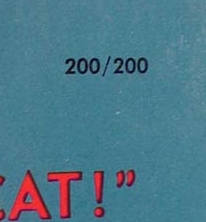 The first Beginner Book, The Cat In The Hat, published in March 1957 originally sold for $2.00 ('200/200' on front top right DJ flap), but the price was reduced in late-1957/early-1958 to $1.95 ('195/195' on front top right DJ flap). From 1958 to 1972 Beginner Books remained at a selling price of $1.95. Random House raised the price to $2.50 in 1972. In only a couple of instances is the price on the DJ necessary to identify a first edition Beginner Book.
The first Beginner Book, The Cat In The Hat, published in March 1957 originally sold for $2.00 ('200/200' on front top right DJ flap), but the price was reduced in late-1957/early-1958 to $1.95 ('195/195' on front top right DJ flap). From 1958 to 1972 Beginner Books remained at a selling price of $1.95. Random House raised the price to $2.50 in 1972. In only a couple of instances is the price on the DJ necessary to identify a first edition Beginner Book.
Identifying Beginner Books First Editions
There are three primary means to identify first edition Beginner Books:
- Stated 'First Printing' on the the copyright page.
- A dust jacket unique to the first printing.
- A dust jacket with the correct sequence of Beginner Books.
Stated “First Printing”
Fourteen books have “First Printing” stated on the copyright page. Please see the following table for the listing of the books.
It is important to note that in all cases of these fourteen books, the true first printings will state “First Printing”, are published by Beginner Books AND are distributed by Random House. Later printings will be published by Beginner Books, a division of Random House. To clear up this mystery...
“Distributed By” Versus “Division Of”
 Prior to 1960, Beginner Books existed as an independent publishing company, and the books were distributed by Random House. In 1960, Beginner Books was sold to Random House and became a division of the company.
Prior to 1960, Beginner Books existed as an independent publishing company, and the books were distributed by Random House. In 1960, Beginner Books was sold to Random House and became a division of the company.
The true first printings of the first seventeen books will have “Distributed by Random House” on the book and dust jacket in addition to the other identifying points enumerated in the table. Later printings of these books will have a “Division of Random House” on the book and/or the dust jacket.
This point is crucial to identifying true first printings of the first seventeen Beginner Books, since Random House did print “First Printing” on the copyright page of several of the books after the transaction. In these instances, the book is a first Random House printing, although not a first printing in the collector sense of the phrase.
For example, we have two copies of Beginner Book B-9, The Whales Go By, each stating ‘First Printing”, on the copyright page, and indicating copyright 1959. However, in the first copy, which is the true first printing, the back dust jacket lists only twelve books, from The Cat In The Hat (1957) to Book of Laughs (1959). This book is printed by Beginner Books, Inc, and distributed by Random House. The second copy, also stating ‘First Printing’ on the copyright page, lists books from The Cat In The Hat to Are You My Mother? (1960). This book is published by Beginner Books, a division of Random House, and is therefore not a true first printing.
It’s really not too complicated:
Beginner Books which state ‘First Printing’ on the copyright page and are also distributed by Random House, are the true first printing of the book.
Beginner Books With Unique Dust Jacket
Three first edition Beginner Books have dust jackets that were not used on any other books in the series. The dust jackets were unique to the first edition book.
The early printings of The Cat In The Hat, the first Beginner Book, has a unique back dust jacket which was not used on other books in the series. The first edition The Cat In The Hat can be identified by the '200/200' price ($2.00) on the front dust jacket flap.
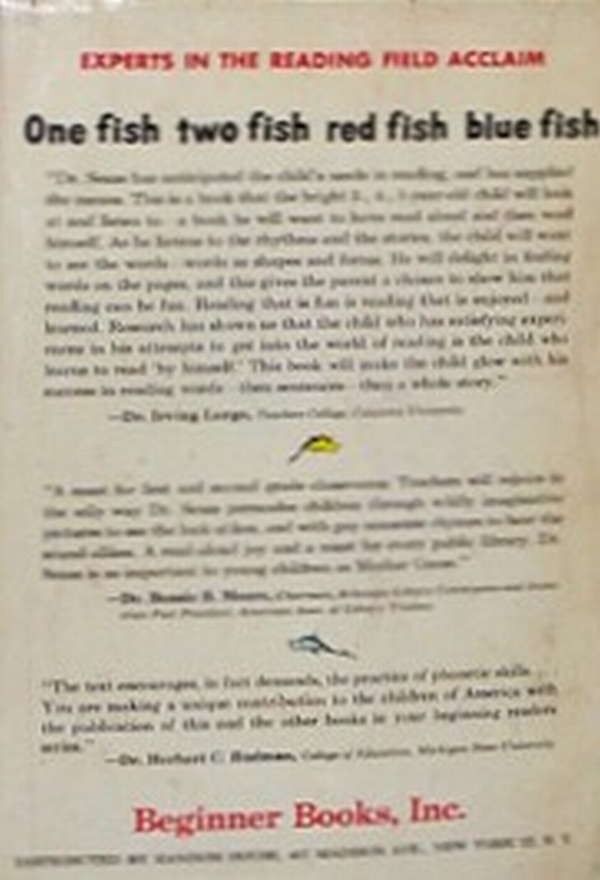 The two other books with 'unique' dust jacket backs are Hop On Pop, and One Fish, Two Fish, Red Fish, Blue Fish. While the back dust jacket of most Beginner Books listed the other books in the series, the dust jacket backs for these two books contains reviews of the particular book.
The two other books with 'unique' dust jacket backs are Hop On Pop, and One Fish, Two Fish, Red Fish, Blue Fish. While the back dust jacket of most Beginner Books listed the other books in the series, the dust jacket backs for these two books contains reviews of the particular book.
 For Hop On Pop, the top of the dusk jacket back states “About HOP ON POP, educators say:” followed by five reviews.
For Hop On Pop, the top of the dusk jacket back states “About HOP ON POP, educators say:” followed by five reviews.
For One Fish, Two Fish, Red Fish, Blue Fish, the top of the dusk jacket back states “EXPERTS IN THE READING FIELD ACCLAIM”, followed by three reviews.
For both Hop On Pop and One Fish, these unique review backs were only used on the first printings. Without the dust jacket, it is not possible to identify a true first edition of either book.
Identifying First Edition Beginner Books With Correct Dust Jacket Listing
What complicates the first edition identification of Beginner Books is that a chronological listing of the titles in the series has been difficult to attain. We compiled the following table to help rectify this issue - it lists the fifty-five Beginner Books produced through 1970 in chronological order.
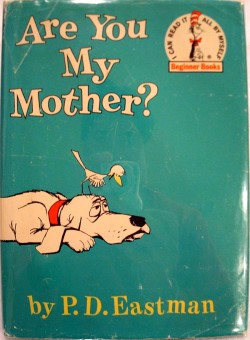 With the exception of The Cat In The Hat, the first printing of each of these has a dust jacket price of $1.95. The price will be printed on the front dust jacket flap either in the form “195/195” or “$1.95”.
With the exception of The Cat In The Hat, the first printing of each of these has a dust jacket price of $1.95. The price will be printed on the front dust jacket flap either in the form “195/195” or “$1.95”.
The Eighteen Dust Jackets ...
From 1957-to-1970, we have identified eighteen different Beginner Book dust jacket back covers, and have listed them chronologically in the table below. To help with the discussion, these dust jackets have been enumerated 'A'-to-'R'. From this table, we can reference a particular dust jacket to help identify first editions (see table, below).
For those with a value system inclined toward pictures rather than words, you can always visit our web page with images and links to each of eighteen dust jackets.
Some points to note:
- DJ 'A' (1957) - Only used on the The Cat In The Hat, the first book in the series.
- DJ 'B' (1958) - Used on the first six books in the series. It is not uncommon to find copies of The Cat In The Hat with the listing of six books on the back DJ.
- DJ 'C' (1959) - Not common. One does not often come across The Cat In The Hat or the other six books in the series with this particular back DJ.
- DJ 'D' (1959) - Lists twelve books in the series, is the more common of the two DJ's used in 1959.
- DJ 'F' (1960) - We have identified three variants with this configuration of listing 18 books in the series. Five first edition Beginner Books have this back DJ title list configuration.
- DJ 'G' (1961) - Not common, used in early 1961, and much scarcer than the type 'H' dust jacket used later that same year. Both of the first edition Beginner Books with this title list configuration are quite difficult to come across (BB-19 Ten Apples Up On Top! and BB-20 Go, Dog, Go!).
- DJ 'H' (1961) - Quite common to find the earlier Beginner Books with this DJ configuration listing 24 titles. Speculating ..., 1961 is the first full year with Beginner Books operating as a Division of Random House, and potentially could mean an increase in production quantities. The four first edition Beginner Books published in this era are not too uncommon.

Continuing, some points to note:
- DJ 'I' (1962) - BB-25, Robert The Red Horse, is the only first edition Beginner Book with a back DJ title list configured with 25 books.
- DJ 'J' (1962) - It's not uncommon to find earlier Beginner Books with this 28 title list configuration.
BB-28, The Big Honey Hunt, is the first book in the Berenstain Bears franchise, now over 200 books strong, and is moderately difficult 'get'. Given the phenomenal publishing success of the franchise, first editions of the first book in the series should be in demand for decades to come. - DJ 'L' (1963) - It's not uncommon to find earlier Beginner Books with this 33 title list configuration.
- DJ 'M' (1964) - Back DJ advertises The Cat In The Hat Beginner Book Dictionary and was used throughout 1964. BB-36, The Bike Lesson, is the second book in the Berenstain Bears franchise.
- DJ 'N' (1965) - BB-37, Fox In Socks, is the only first edition Beginner Book with a back DJ title list configured with these 37 books. This is the last titles listing which is comprehensive, as later back DJ title list configurations omitted some books.
- DJ 'P' (1965) - The back DJ lists through BB-40, however only has 37 titles listed, omitting three. The three titles excluded are BB-4 The Big Jump and other Stories, BB-5 Big Ball of String, and BB-12 Ann Can Fly. It is unclear whether these three books were taken out of publication, or whether their title was simply excluded from the list. Although three new Beginner Books were introduced in 1965 (BB-38 Fox In Socks, BB-39 The King, The Mice, and The Cheese, and BB-40 I Wish That I Had Duck Feet), none of the first editions have this back title configuration. Another peculiarity of this back title configuration is the spelling of Fox In Socks, understandedly misspelled Fox In Sox.
- DJ 'Q' (1966) - The back DJ lists through BB-44, however only has 41 titles listed, omitting three. The three titles excluded are BB-4 The Big Jump and other Stories, BB-5 Big Ball of String, and BB-12 Ann Can Fly.
- DJ 'R' (1967-1970) - Since it was used over a number of years, It is quite common to find earlier Beginner Books with this back DJ configuration.
Identifying First Edition Beginner Books
From the table above, we provide you the table below, which summarizes the first edition identification points for the first fifty-five Beginner Books. Soon to come, links with photos for each of the Beginner Books in the table.

Blog: Children's Picturebook Price Guide (Login to Add to MyJacketFlap)
JacketFlap tags: First Edition Identification Points, Add a tag
There are a number of children's books initially published with modest expectations, then blossomed into franchisable pop culture phenomena causing million dollar windfalls for their authors and publishers. The Little Engine That Could, Madeline, Cat In The Hat, come quickly to mind. In most instances the first edition book for each franchise sells for considerable bucks in the book collecting marketplace since the original expectations for the book was underwhelming in regard to the successful reality. [Note: TLETC, CITH, and Madeline first editions copies routinely sell for $1000+ in today's book collecting market place. In the past, we've written about the factors affecting the collectibility of a children's book.] Because of this originally unexpected but long-lived popularity a multitude of collectors are chasing a constrained supply of first edition books.
There was no such constrained supply for the original issue of Rudolph The Red-Nosed Reindeer, as Montgomery Ward gave away over two million copies of the book to their shoppers during the Christmas of 1939. The original issue was in comic book-like format, with soft cover wraps. Giveaways being what giveaways be, most of the two million copies were read, read again and again, received wear, tear, torn covers, torn pages, then discarded, many copies serving their patriotic duty during the WWII paper drives. A small proportion of the two million giveaways have survived to today's collectible book market.
Both the 1939 and 1946 softcover copies pre-date the Rudolph franchise phenomena. Rudolph firmly took root in our collective conscious with Gene Autry's 1949 bestselling Christmas ballad, which has become a holiday classic. The highly successful 1964 stop-motion children's movie cemented Rudolph in our popular culture, and the 30 minute made for TV film is the longest running consecutive year TV perennial.
Every Christmas season sees a number of the surviving Rudolph softcover books surface to auction on eBay, often in tattered worn and torn condition. More often than not, the Rudolph being offered is the 1946 version rather than the 1939 first issue. A very good copy of the 1939 first issue should bring $200 to $300, while a very good copy of the 1946 issue should bring $10 to $20.
Rudolph The Red-Nosed Reindeer has been part of Christmas lore since he entered the pop culture conscious in 1939. From the St. James Encyclopedia of Pop Culture by Robert E. Schnakenberg:
Rudolph the Red-Nosed Reindeer was the brainchild of Robert L. May, a 35-year-old advertising copywriter for the Chicago-based Montgomery Ward department store. In 1939, May was commissioned by his supervisor to create an original Christmas story that the store could give away to shoppers at holiday time. May was tapped in part for his affinity for children's limericks, the form in which the first Rudolph iteration was written. [...]
The first Rudolph booklet, with illustrations by Denver Gillen, was distributed to two and a quarter million Montgomery Ward customers during Christmas of 1939. Although quite popular, it was not released again until 1946 due to wartime paper shortages, but by the end of that year, a total of six million copies had been distributed nationwide.
It was in this form that Rudolph first became an icon for wartime Christmas celebrants and a lucrative marketing tool for Montgomery Ward. It made little money for May, however, until 1947, when he persuaded Montgomery Ward president Sewed Avery to transfer the copyright to him.
With these rights secured, May set about building the next generation of Rudolphiana. In 1947, a nine-minute Rudolph the Red-Nosed Reindeer cartoon, directed by Popeye creator Max Fleisher, played in movie theaters nationwide. Two years later, May commissioned his brother-in-law Johnny Marks to write a song based on the Rudolph character. The song, which glossed over many of the key details of May's original story, became an immense hit for vocalist Gene Autry, selling two million copies in 1949 and joining "White Christmas" in the pantheon of Yuletide standards. In 1952, a now wealthy May quit his job at Montgomery Ward to manage the Rudolph business full-time. [...]
Robert L. May's prototypical creation was commemorated in 1990 with the publication of a handsome facsimile edition--the first time the story had been offered for sale in its original form.
St. James Encyclopedia of Popular Culture, 2002 Gale Group.
This first issue is almost comic book in form, bound in glossy red paper wrappers. The book measures 10-1/4 x 7-1/2 inches, and has pages plus wrappers. The 1939 first edition Rudolph the Red-Nosed Reindeer can be identified by the tri-motored airplane on page 9. The 1946 edition has a four-motored plane.

Note: In 1939 Montgomery Ward published 1000 hardbound copies in a gift box as a giveaway to their executives and suppliers. The 1939 hardbound copies are very difficult to find.
Add a CommentBlog: Children's Picturebook Price Guide (Login to Add to MyJacketFlap)
JacketFlap tags: First Edition Identification Points, Add a tag
First Edition Little House Fetches $9775 at PBA Galleries Auction

The first edition copy of the 1943 Caldecott Medal winning book The Little House we described in our May 2007 blog post sold for $9775 at the July 12, 2007 PBA Galleries children's book auction.
The first edition The Little House is very difficult to find, and we estimated the book would sell for close to $10,000. The Children's Picturebook Price Guide estimates a first edition The Little House to be valued at $5,000 in Very Good condition, so obviously the value must be modified upward.
The book auctioned was in 'Fine' condition, in a 'Fine' dust jacket.
Written and illustrated by Virginia Lee Burton, published by Houghton Mifflin in 1942, The Little House first edition books do not surface for sale very often. There are currently none on the market.
The Little House - PBA Galleries Auction
From the PBA Auction description:
Item # : 182758Description:
Illustrated by the author. 9x9¼, teal cloth pictorially stamped in cream, color pictorial jacket. First Edition.
Rare first edition of legendary elusiveness, an exceptional copy in dust jacket.
Condition:
Just a touch of shelf wear, else fine in fine jacket.
See here for actual auction description and results.
Blog: Children's Picturebook Price Guide (Login to Add to MyJacketFlap)
JacketFlap tags: First Edition Identification Points, Add a tag
First Edition Curious George Fetches $21850 at PBA Galleries Auction

The first edition copy of Curious George we described in our May 2007 blog post sold for $21,850 at the July 12, 2007 PBA Galleries children's book auction.
The first edition Curious George is quite rare, the PBA copy being the first to surface at auction in over a decade. Pre-auction estimates were over $10,000, however few thought the children's book would bring over $20,000.
Having never been out of print, and with over 25 million Curious George franchise books sold, this auction garnered quite a bit of interest from book collectors and book sellers.
The PBA Curious George Auction
From the PBA Auction description:
Item # : 182763Description:
Illustrated in color by the author. 10¼x8¼, orange cloth pictorially stamped and lettered in brown, color pictorial yellow dust jacket. First Edition.
Rare first edition in dust jacket of the beloved children's tale featuring inquisitive ape Curious George and his captor/protector The Man in the Yellow Hat. Curious George made his literary debut in the French children's book titled Rafy and the Nine Monkeys. Before H.A. Rey and his wife Margret could submit to a publisher the sequel featuring George, the Nazis captured Paris, and the Jewish couple fled on bicycles to Lisbon with five manuscripts, among them Curious George. Following a brief sojourn in Brazil, the Reys made it to the United States, where they were able to find a publisher for the eventual classic. Besides influencing the consciousness of countless post-war children, the work is the basis for the recent movie, and the ongoing PBS television show. The book itself is quite rare in the first edition, but the jacket is virtually unobtainable. The present example of the jacket is unclipped, with the price of $1.75 present the top of the front flap; at the top of the rear flap is affixed the sticker of Bullock's Wilshire, with the detachable price (also $1.75) still present. No copies of Curious George are listed by American Book Prices Current as having been sold at auction since 1975, further evidence of the book's scarcity.
Condition:
Light dust-soiling to jacket, a few short tears (1¼" or smaller), small chips at spine ends; a few faint scratches to covers, else near fine in very good or better jacket.
See here for actual auction description and results.
Blog: Children's Picturebook Price Guide (Login to Add to MyJacketFlap)
JacketFlap tags: First Edition Identification Points, First Edition Identification Points, Add a tag

A first edition copy of Pumpkin Moonshine, Tasha Tudor's first book, is coming up for auction on July 12, 2007 at PBA Galleries.
Published by Oxford University Press in 1938, Pumpkin Moonshine first edition books do not surface for sale very often. There is currently only one first edition book with dust jacket on the market. The Children's Picturebook Price Guide estimates Pumpkin Moonshine to be valued at over $3,000 in Very Good condition. The first edition book being auctioned is in Near Fine condition, with a Very Good + dust jacket.
The photographs being displayed on this page are from the actual book being auctioned.
The July 12, 2007 PBA Galleries auction includes a rare first edition Curious George, along with a first edition The Little House, and a a first edition The Gremlins.
Pumpkin Moonshine Background
From the Women Children's Book Illustrators:
Pumpkin Moonshine published in 1938, was done as a gift for a young niece. The "dummy" book she took to editor Eunice Blake at Oxford University Press was bound in calico cloth. The publishers liked the look so well they produced Tudor's first five books in a calico-look binding, leading collectors to refer to Pumpkin Moonshine, Alexander the Gander, Linsey Woolsey, Dorcas Porkus and Country Fair as her "calico books."
Having illustrated nearly one hundred books, Tasha Tudor is well known for her delicate watercolor and ink illustrations. Tudor's artwork is often compared to Kate Greenaway and Beatrix Potter, which is not too surprising when one considers her 19th century lifestyle.
She had four children, and the Tudor's emulated a nineteenth-century rural lifestyle, on farms in Connecticut, New Hampshire and Vermont. These homes often lacked electricity and running water. The Tudor's washed clothes by hand, learned to spin and weave, made bread from scratch, and decorated their homes with antique furniture. From her Tasha Tudor website:
Her home, though only 30 years old, feels as though it was built in the 1830's, her favorite time period. Seth Tudor, one of Tasha's four children, built her home using hand tools when Tasha moved to Vermont in the 1970's. Tasha Tudor lives among period antiques, using them in her daily life. She is quite adept at 'Heirloom Crafts', though she detests the term, including candle dipping, weaving, soap making, doll making and knitting. She lived without running water until her youngest child was five years old.
Tasha Tudor has received two Caldecott Honor Awards, in 1945 for Mother Goose, and again in 1957 for 1 Is One. Tasha Tudor also received the Regina Medal from the Catholic Library Association in 1971 for her contributions to children's literature. and an honorary doctorate from the University of Vermont.
First Edition Identification - Book
The key identifying point is no additional printings stated on the copyright page. 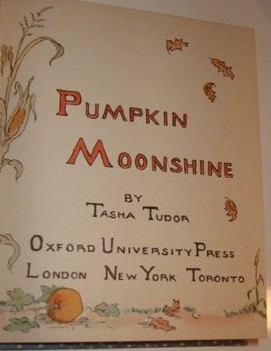
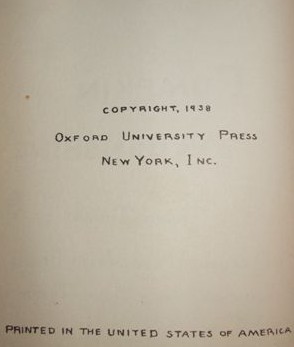
First Edition Identification - DJ
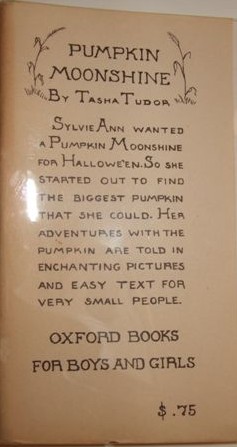 The key identifying point is the '$.75' price on the bottom of the front DJ flap.
The key identifying point is the '$.75' price on the bottom of the front DJ flap.
Blog: Children's Picturebook Price Guide (Login to Add to MyJacketFlap)
JacketFlap tags: First Edition Identification Points, First Edition Identification Points, Add a tag
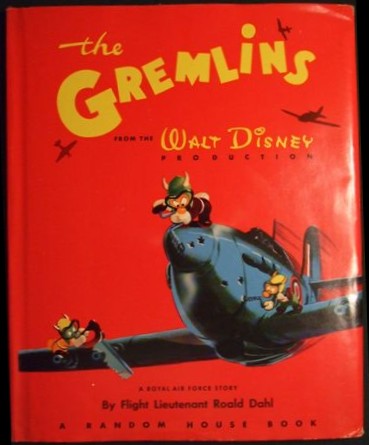
A first edition copy of The Gremlins, the 1943 book written by Roald Dahl, is coming up for auction on July 12, 2007 at PBA Galleries.
A Walt Disney Production published by Random House in 1943, The Gremlins first edition books do not surface for sale very often. There are currently five first edition books with dust jacket on the market, ranging in price from $6000 to $2200, none of which are in as nice a condition as the book being offered. The first edition book being auctioned is in Near Fine condition, with a Near Fine dust jacket.
The photographs being displayed on this page are from the actual book being auctioned.
The July 12, 2007 PBA Galleries auction includes a rare first edition Curious George, along with a first edition The Little House, and a a first edition Pumpkin Moonshine.
The Gremlins Background
Roald Dahl served in the Royal Air Force as a fighter pilot and he became a Wing Commander. In 1940 Dahl's plane was hit by a machine gun fire, and he was severely injured. He was rescued by a fellow pilot and took him six months to recover.
Dahl was sent to the U.S. as an air attache. while his outspoken style made him unpopular with his Air chiefs, it made him a favorite of the cocktail set. He was sent back to England, and is said to have been recruited by the British Secret Service by 'Intrepid,' aka William Stephenson, who was trying inspire sufficient public sympathy to enable Roosevelt to openly support Britain. Dahl was sent back to the U.S. with a promotion, much to the chagrin of the Air chiefs.
In 1943, Dahl wrote The Gremlins, a book for children about the hazards of being an RAF pilot. The Gremlins were little havoc causing creatures, behind any mishaps experienced by pilots and their machines. RAF insider jokes blamed The Gremlins for all the technical malfunctions in airplanes. Gremlin jokes were widely used by the RAF during the World War II and so got into popular culture as well..
From Disney Goes To War:
"Walt Disney planned to make a cartoon film version of The Gremlins. The film was never made, some say because of the difficult task of making loveable creatures who exist solely to destroy Allied airplanes. Disney actively tried to stop others from making Gremlin cartoons, however. "
Dahl's presence in Washington came to the attention of Eleanor Roosevelt, who had been reading The Gremlins to her grandchildren. From Penguin Group Roald Dahl biography:
"Roald was never very keen on The Gremlins and didn’t really think of it as a children’s book. Nevertheless, it caught Eleanor Roosevelt’s eye and Roald became a not infrequent guest at the White House and FDR’s weekend retreat, Hyde Park. "
n 1953, Dahl married the actress Patricia Neal; two of his early children's books, James and the Giant Peach (1961) and Charlie and the Chocolate Factory (1964) grew out of the bedtime stories he made up for their children. Both books have become children's classics, and turned into major motion pictures.
Elaine Moss, writing in the Times, called the Charlie and the Chocolate Factory "the funniest children's book I have read in years; not just funny but shot through with a zany pathos which touches the young heart."
Roald Dahl was an author and screenwriter whose awards include: Edgar Allen Poe Award from the Mystery Writers of America in 1954, 1959, and 1980 for being a " master of the macabre and the suprise denouement"; Federation of Children's Book Groups Award, 1983; Whitbread Award, 1983; and World Fantasy Convention Award, 1983. Dahl once said:
"“I’m probably more pleased with my children’s books than with my adult short stories. Children’s books are harder to write. It’s tougher to keep a child interested because a child doesn’t have the concentration of an adult. The child knows the television is in the next room. It’s tough to hold a child, but it’s a lovely thing to try to do."
First Edition Identification - Book
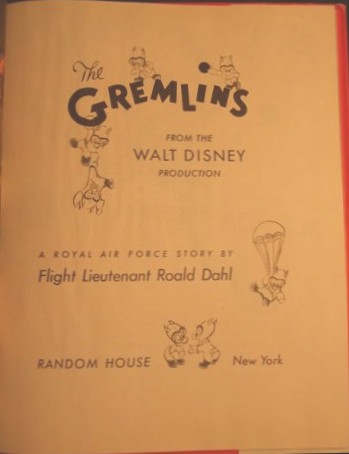 The key identifying point is the '1942' on the title page, and no additional printings stated on the copyright page.
The key identifying point is the '1942' on the title page, and no additional printings stated on the copyright page. 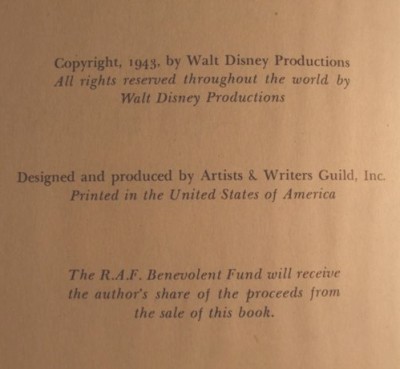
First Edition Identification - DJ
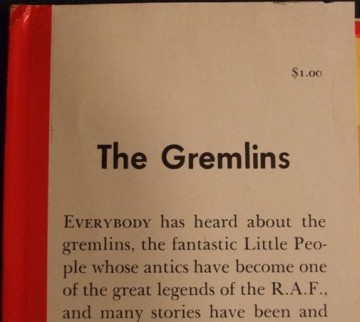 The key identifying point is the '$1.00' price on the front DJ flap.
The key identifying point is the '$1.00' price on the front DJ flap.
Blog: Children's Picturebook Price Guide (Login to Add to MyJacketFlap)
JacketFlap tags: First Edition Identification Points, First Edition Identification Points, Add a tag
First Edition Curious George Auction

A first edition copy of Curious George is coming up for auction on July 12, 2007 at PBA Galleries.
The first edition Curious George is quite rare, and some have estimated the book will sell for over $10,000. Having never been out of print, and with over 25 million Curious George franchise books sold, this auction will garner quite a bit of interest.
After extensive search, no auction records have been unearthed showing the sale of a first edition Curious George.
The photographs being displayed on this page are from the actual book being auctioned.
Curious George Background
Created by the husband and wife team of Hans Augusto and Margret Rey (who were living in Paris at the time), the mischievous monkey Curious George first appeared in the 1939 French book Rafi et les 9 Singes. The book was followed by its 1939 UK version Raffy And The 9 Monkeys.
In 1940, due to WWII, the Rey’s escaped Paris and circuitously found their way to New York. In 1941, Houghton Mifflin published Curious George, and the book has never been out of print. Curious George was followed by Cecily G. and the 9 Monkeys in 1942, then the Rey's went on to publish five other books based upon the character.
Today, the Curious George franchise still runs strong, with over thirty different books in print. From Houghton Mifflin’s website:
For sixty years these books have been capturing the hearts and minds of readers throughout the world. All the Curious George books, including the seven original stories by Margret and Hans, have sold more than twenty-five million copies. So popular that his original story has never been out of print, George has become one of the most beloved and recognizable characters in children's literature. His adventures have been translated into many languages, including Japanese, French, Afrikaans, Portuguese, Swedish, German, Chinese, Danish, and Norwegian.
First Edition Identification - Book
 The key identifying point is the '1941' on the title page, and no additional printings stated on the copyright page.
The key identifying point is the '1941' on the title page, and no additional printings stated on the copyright page. 
First Edition Identification - DJ
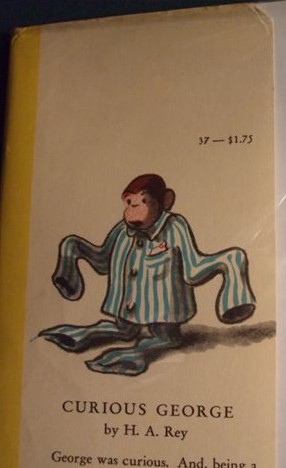 The key identifying point is the '$1.75' price on the front DJ flap.
The key identifying point is the '$1.75' price on the front DJ flap.
Book Condition
 The book being auctioned by PBA Galleries is in fine condition, in a very good dust jacket. The binding is tight, with sharp corners. Pages only slightly off-white.
The book being auctioned by PBA Galleries is in fine condition, in a very good dust jacket. The binding is tight, with sharp corners. Pages only slightly off-white. 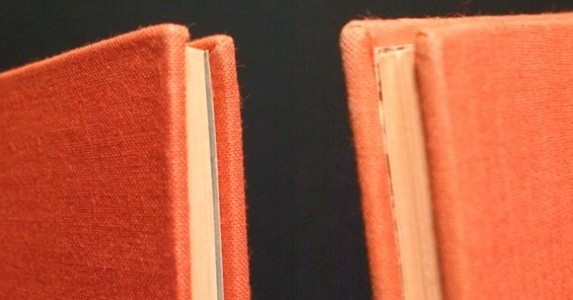

Dust Jacket Condition
 The dust jacket on the book being auctioned by PBA Galleries is in a very good condition, with several small tears and some light soiling.
The dust jacket on the book being auctioned by PBA Galleries is in a very good condition, with several small tears and some light soiling.
There are two small tears on the front DJ. The first, about a 1" long diagonal in the top right corner, and the 2nd, also about 1" long on the bottom left corner. 
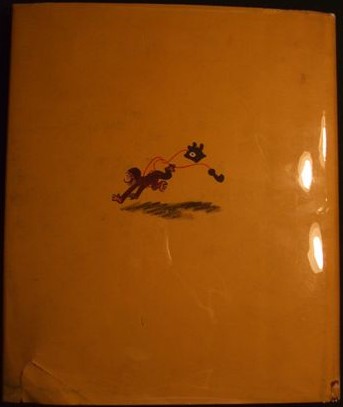 The back dust jacket has a 1 1/2" tear in the bottom left corner and another tear at the bottom along the spine, with a small amount of paper loss.
The back dust jacket has a 1 1/2" tear in the bottom left corner and another tear at the bottom along the spine, with a small amount of paper loss. 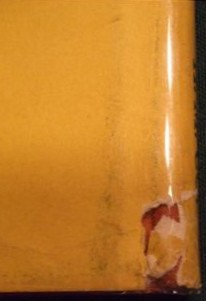

Blog: OUPblog (Login to Add to MyJacketFlap)
JacketFlap tags: blog, Health, Education, oxford, autism, A-Featured, Medical Mondays, conversational, touching, grammatical, learn, Add a tag
April is National Autism Awareness Month and the OUPblog would like to raise awareness by sharing excerpts from two different, but equally useful books. Helping Children With Autism Learn: Treatment Approaches for Parents and Professionals, by Bryna Siegel, is a practical guide to treating the learning differences associated with Autism. Siegel, the Director of the Autism Clinic at Langley Porter Psychiatric Institute, gives practical guidance for fashioning a unique program for each child’s problem, effectively empowering families. In the excerpt below Siegel explains how to help verbal children use their words. Be sure to check back later today for an excerpt from Stress and Coping in Autism.
If He Understands, Why Won’t He Answer?
Autistic children need a reason to answer. “Just because I asked” is usually not a good enough reason, as that would be a more purely social reason. The probability that a child with autism will answer, or appear to comprehend or comply increases as the “instrumental press” increases. This means if the child can see that there are clearly  desirable consequences to answering, and he knows how to answer, he will respond. Just as is the case when using visually based communication, it is necessary to create a situation in which the child wants to answer, or wants to ask a question because in his mind, it will get him something he wants or wants to know.
desirable consequences to answering, and he knows how to answer, he will respond. Just as is the case when using visually based communication, it is necessary to create a situation in which the child wants to answer, or wants to ask a question because in his mind, it will get him something he wants or wants to know.
Upping the Communicative “Press.”
When the child really wants something, it is a good opportunity to increase your communication demands just a bit. If the child has just seen you open a bag of Cheetos, and he said, “Cheetos” while approaching your bag with what looks like an intention to grab the bag, this is a good time to tighten your grip on the bag and say, “Kevin, do you want Cheetos?” If Kevin replies, “Cheetos!” prompt him by touching his chest lightly with your forefinger (I’m assuming Kevin is almost on top of you by now) and saying “I want Cheetos.” If he says, “I want Cheetos,” thank him for asking, and give him a few Cheetos. I prefer “Thank you for asking!” to “Good saying ‘I want Cheetos!’” since the latter is not a grammatical sentence and can only serve to confound any emerging sense of grammatical rules. Adult responses that result in the child’s possibly echoing grammatical formulations that are not correct fails to provide available opportunity to rehearse meaning.
Depending on how many Cheetos you have, and how much Kevin likes them, this could be a good time to practice related conversational gambits like “I want more Cheetos,” and “Mom, I want more Cheetos, please.” Take advantage of the tendency to echo by developing a way of prompting an echo like touching his chest, (or cheek or lips, or touching your own lips then pointing to the child’s mouth). The prompt should model appropriate speech with just a bit more elaboration of the statement the child has generated on his own.
A common error in prompting speech revisions, however, is to take the conversation lesson too far. If the adult starts to prompt the child to “say it better,” add “please” and use a proper noun to address the person with the Cheetos, and keeps withholding the Cheetos until all these additional demands are met, it is no longer a conversation or even a conversational lesson, but just too-hard a lesson. The child is likely to give up and just walk away. The chance to prove the idea that spontaneous requesting is useful is lost. The child will have learned nothing about rules of language pragmatics, which is that you clarify an utterance only until the listener understands. It is also a key teaching opportunity in these kinds of situations for the adult to add real, natural conversational responses, like the “Kevin, do you want Cheetos?” response to an initially nonverbal communicative initiative on the child’s part (trying to grab the bag). This exposes the child to natural language models at a time when his receptivity to what is being said will be high—because he wants something.



